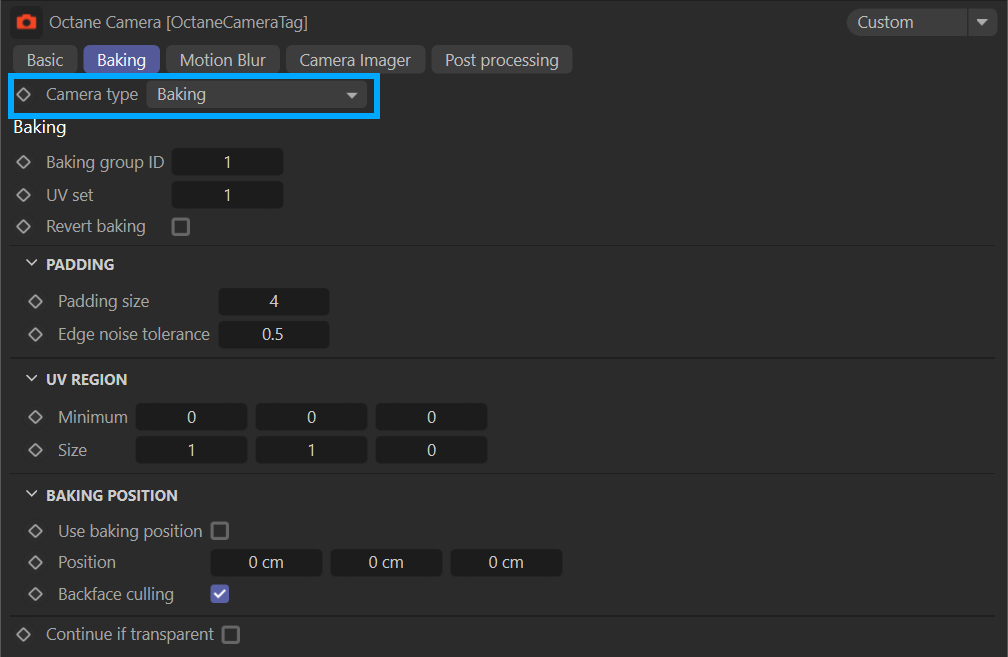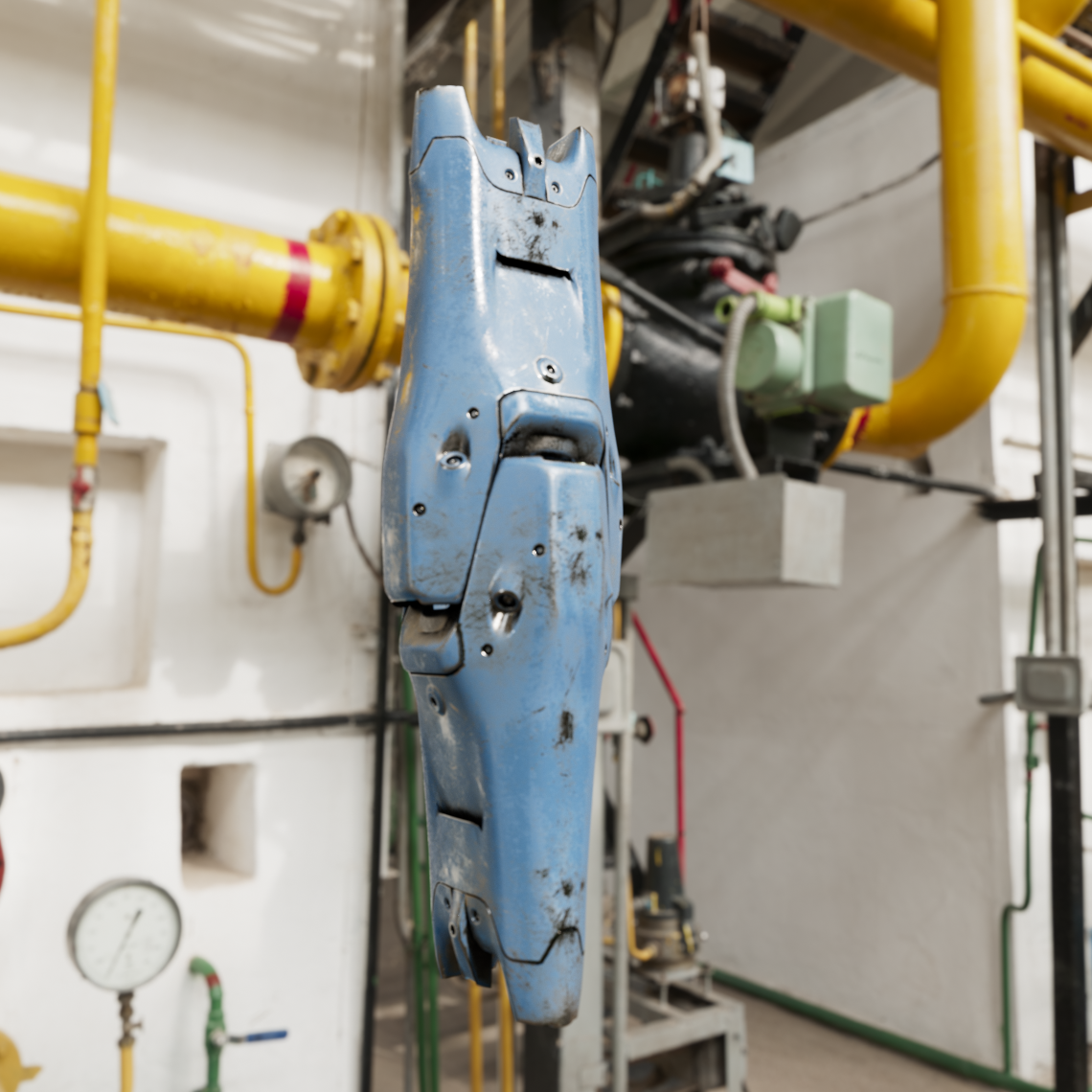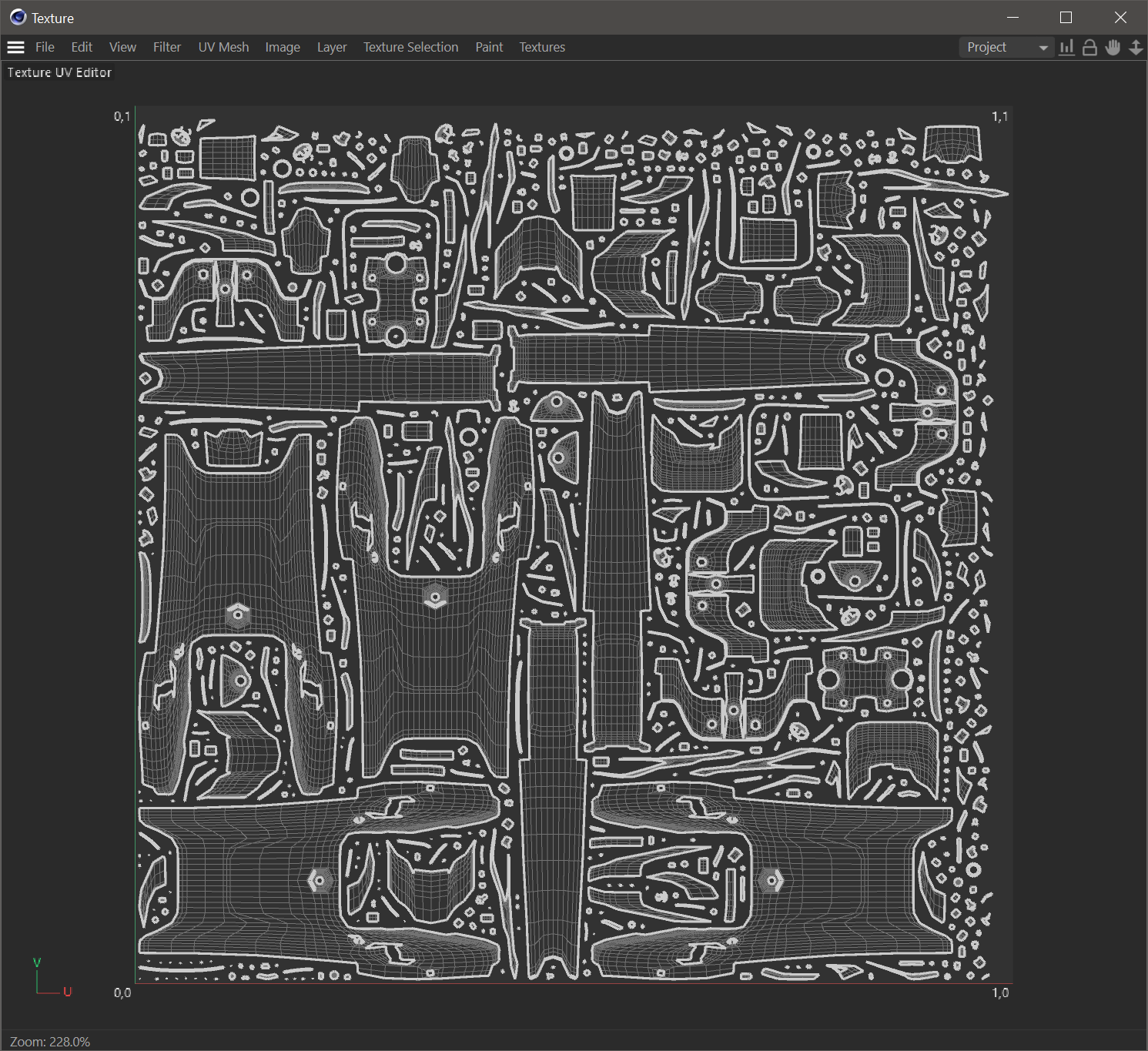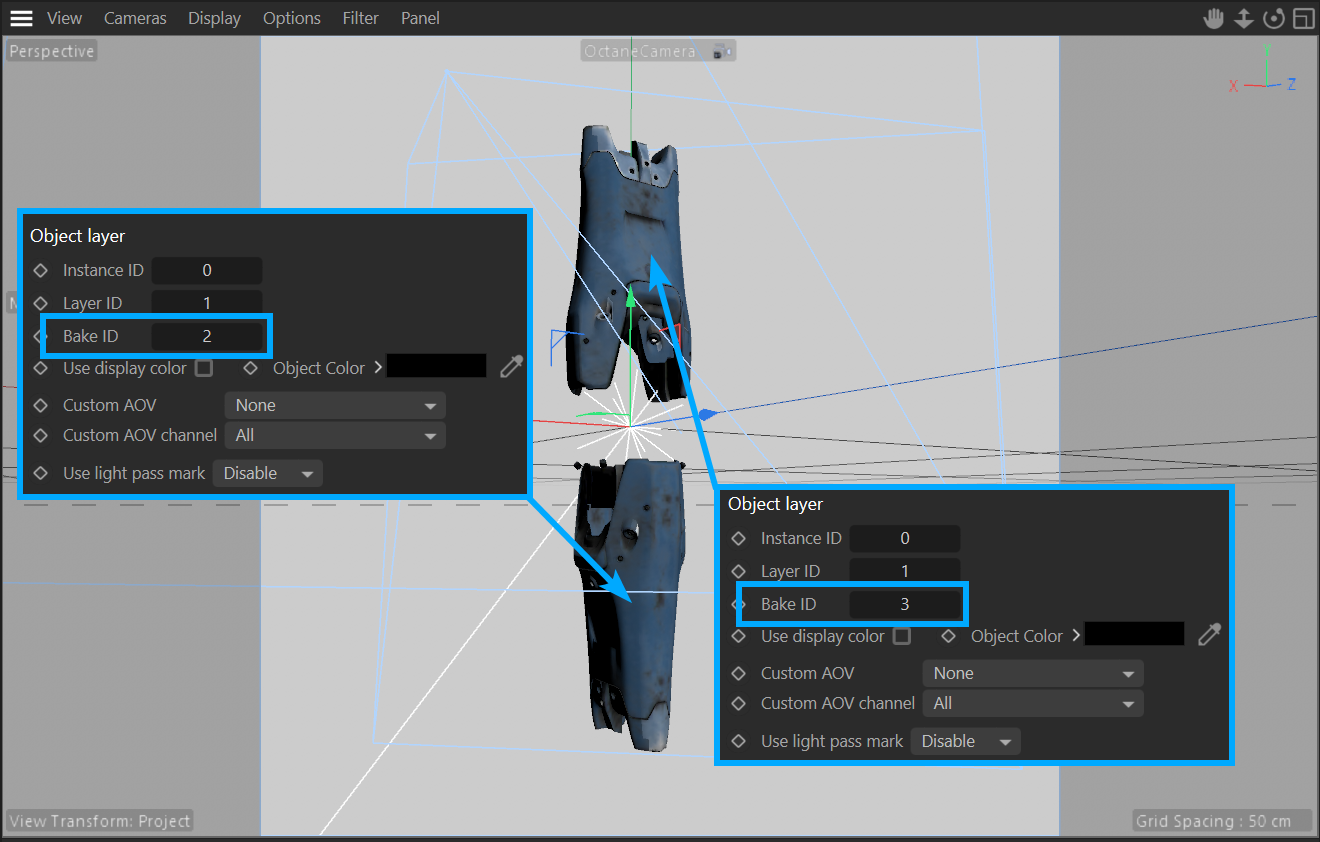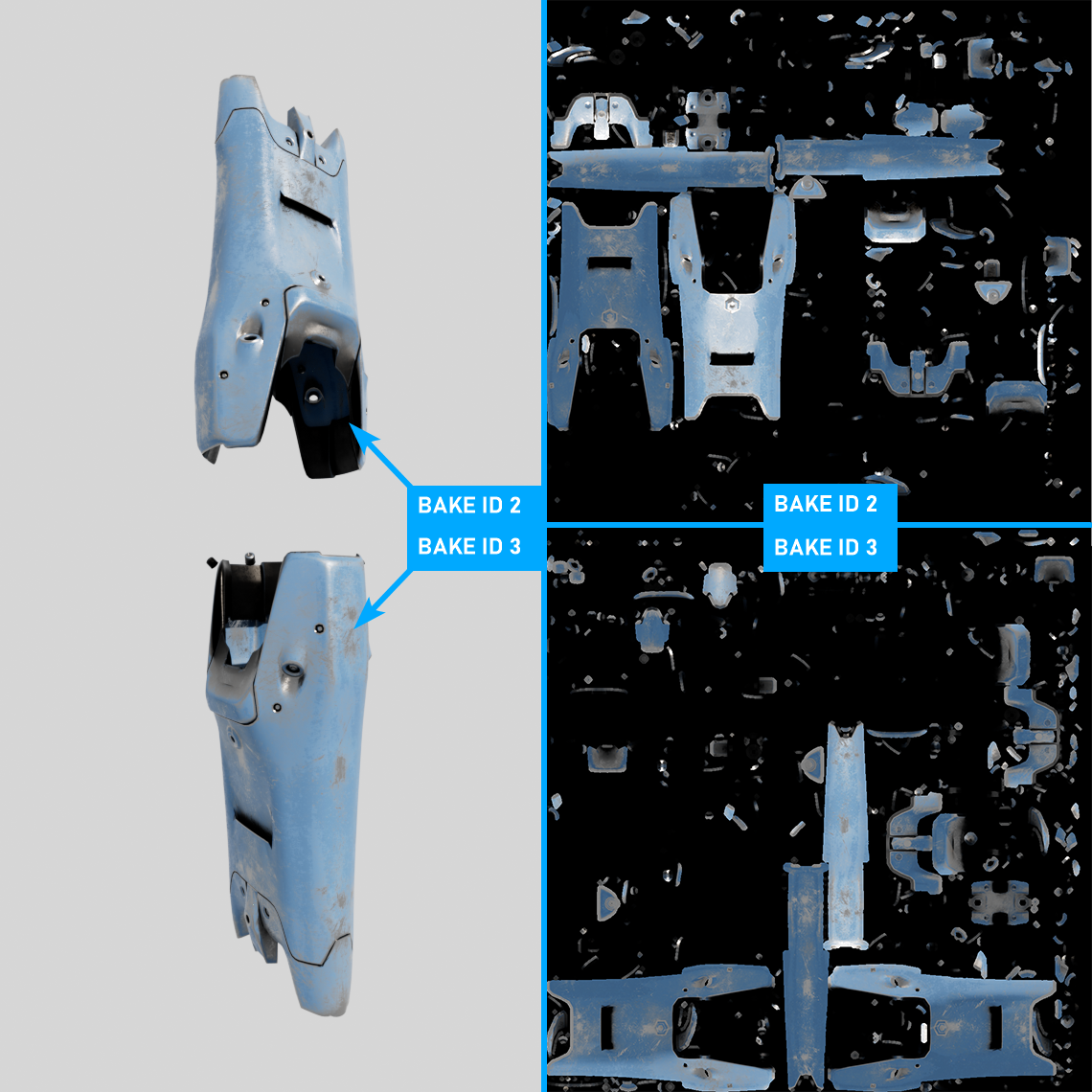Baking Camera
The Baking Camera is used to bake the textures that are assigned to the objects in your scene, and reuse them for other processes (e.g., game engines, compositing etc.). Doing so will improve render times and texture quality. Texture creation is an indispensable technique for game engines. The Baking Camera will retain specular, reflection and other properties.
|
|
baking camera
|
Bake a Texture with Camera Baking
Prepare your lighting and textures. The Baking Camera requires correctly structured UV maps, with islands that do not overlap, as illustrated below.
|
|
rendered model and unwrapped uvs
|
There are two baking options for the baking camera: bake the whole of the scene (not recommended) or bake object by object. In the image below, we wish to bake the texture of both the objects. To do this, first create an "Octane Object Tag" for both objects and go to the "Object Layer" tab in the Tag window. Set "Bake ID" 2 for the top object here. Set "Bake ID" 3 for the bottom Object. Now create one Octane Camera and click on Camera Tag. Change the Camera Type to Baking.
|
|
select each object tag and set up bake ids as shown
|
Run Live Viewer. With the "Bake Group IDs" set as described above in the Octane Camera Tag / Baking options, you'll get the result you see in the image below. You can save these baked textures and reuse them in Unity or Unreal Engine, for example.
|
|
rendered model and baked UVs
|
Camera Baking Settings
Baking Group ID
Specifies which group ID should be baked. By default all objects belong to the default baking group number 1. If you do not define the Bake ID from the Octane Object tag / Object layer menu to your objects in the scene, the bake ID of the whole scene will default to 1 and will bake the entire scene.
UV Set
This determines the UV coordinates to use for baking. If you have more than one UV map in your object, you can change it here and use the corresponding UV map.
Revert Baking
If checked, the camera directions are flipped.
Padding Size
This is the number of pixels added to the UV map edges. The padding size is specified in pixels. The default padding size is set to 4 pixels, being 0 the minimum and 16 the maximum size.
Edge Noise Tolerance
Optionally, an edge noise tolerance can be specified, which assists in removing hot pixels appearing near the UV edges. Values close to 1 do not remove any hot pixels while values near 0 will attempt to remove them all.
UV Region: Minimum & Size
This is the size in UV space of the bounding region for baking.
Baking Position
When enabled, the position for baking "position-dependent" artifacts is used. Position is the camera position for "position-dependent" artifacts such as reflections, etc. Back-face culling determines whether to bake back-facing geometry.

